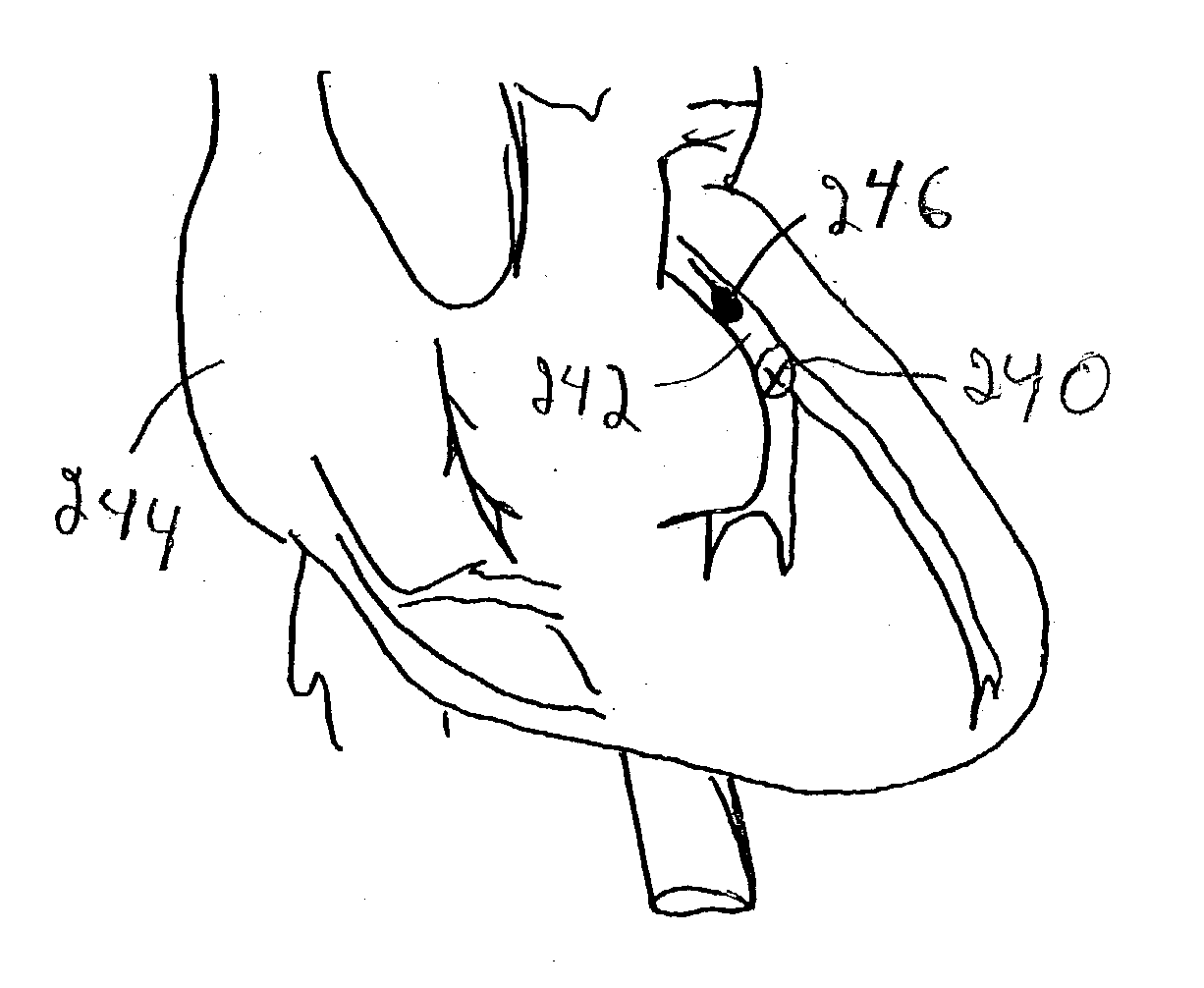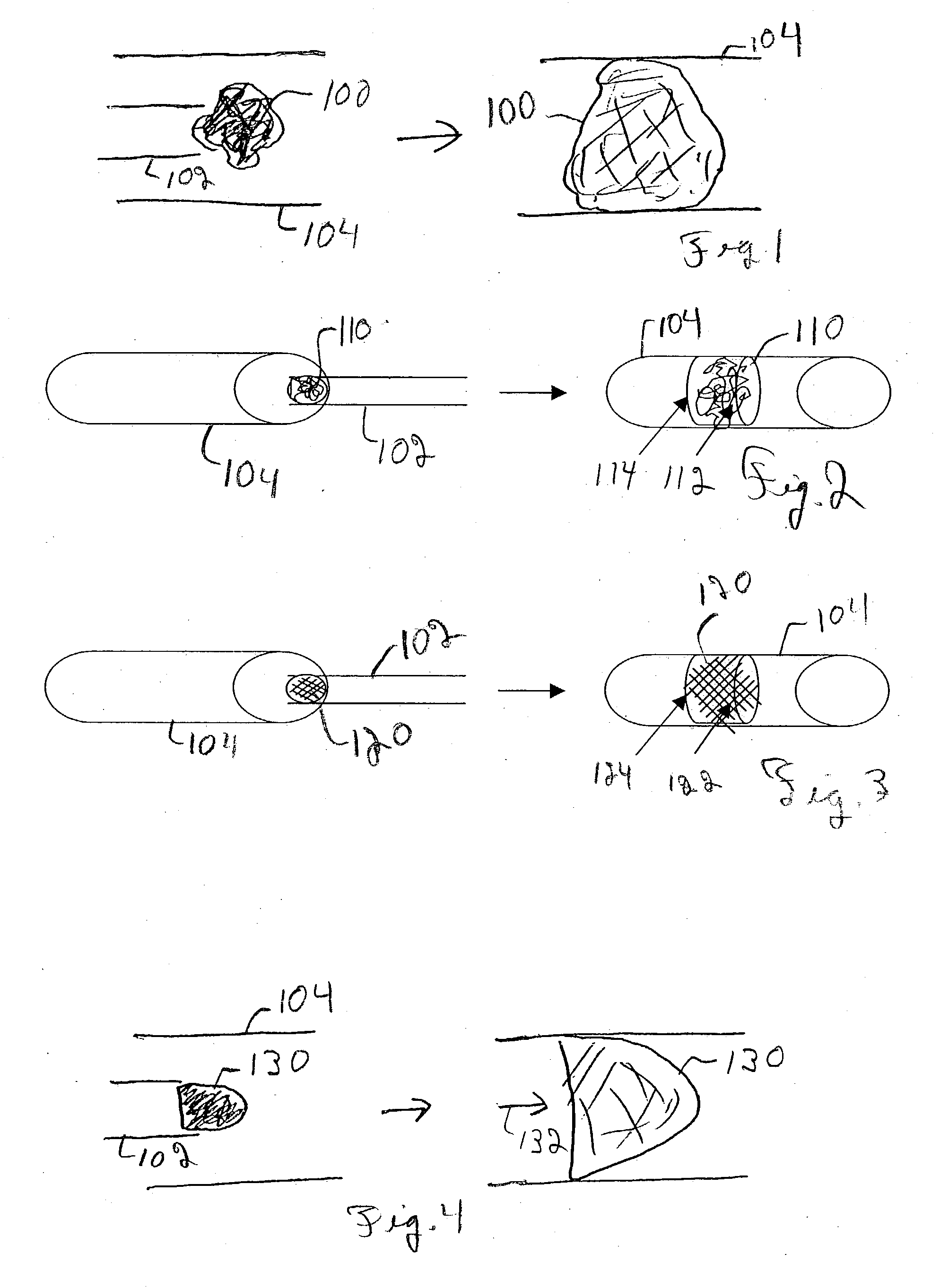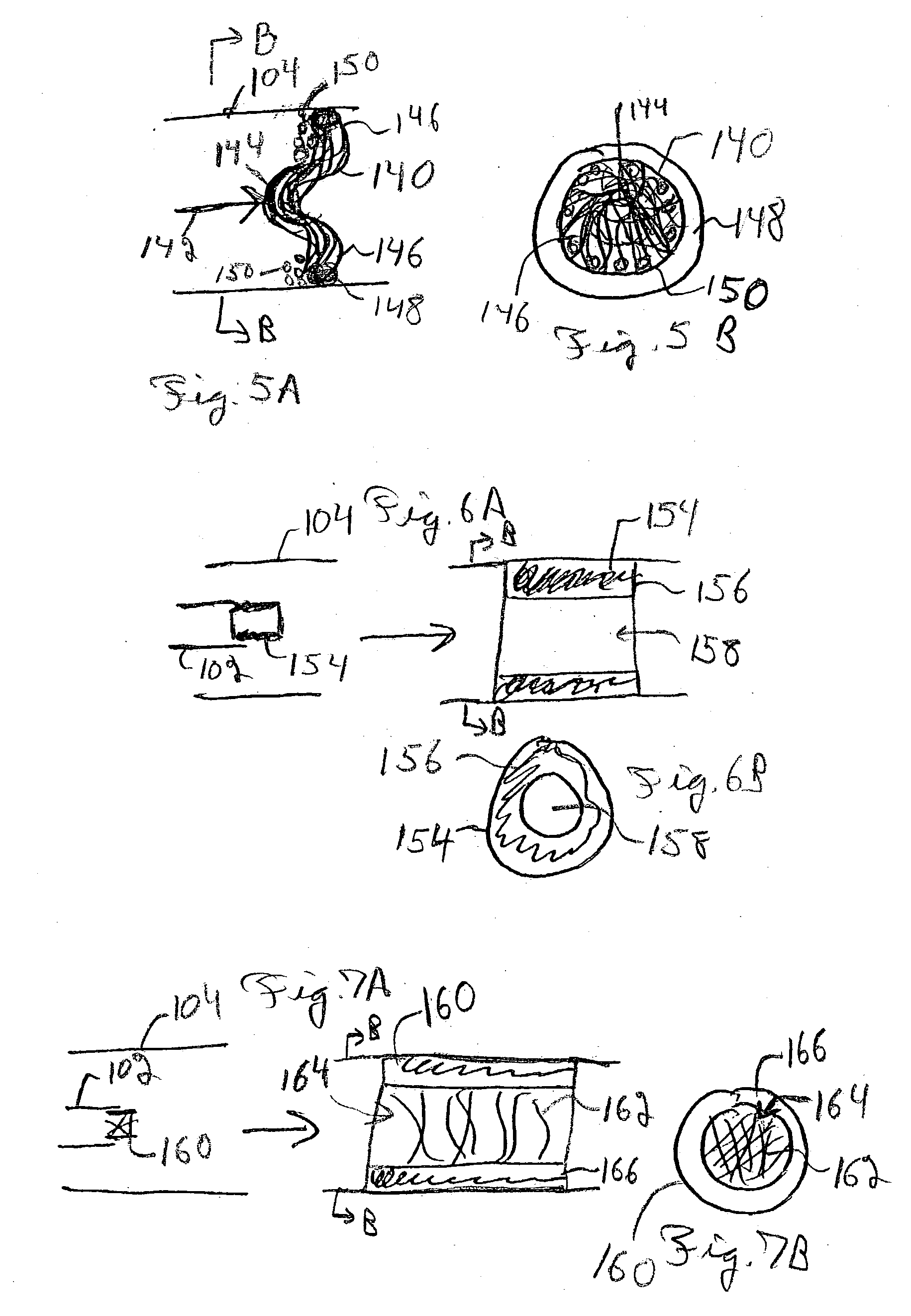Embolism protection devices
a technology of embolism protection and protective device, applied in the field of embolism protection device, can solve the problems of significant patient care expenditure, confusion, speech disturbance, balance disturbance and other neurological deviation, and clinical problems, and achieve the effect of reducing or eliminating the adverse effects of an embolus
- Summary
- Abstract
- Description
- Claims
- Application Information
AI Technical Summary
Benefits of technology
Problems solved by technology
Method used
Image
Examples
example 1
Synthesis of Hydrogel Grafted Polymer
[0134] This example demonstrates the synthesis of a polyacrylamide hydrogel polymer grafted onto a PET polyester polymer.
[0135] Medical grade PET fibers were surface activated by subjecting them to an oxygen plasma. The plasma glow discharge system primarily consisted of a barrel radio frequency (RF) plasma reactor with a diameter and depth of six inches (Extended Plasma Cleaner, Harrick Scientific, Ossining, N.Y.). The pressure was monitored by a thermocouple vacuum gauge (Hastings Vacuum Gauge, DV-6). The reaction chamber was evacuated to 10 millitorr (mtorr) to remove contaminants and moisture. The chamber was then flooded with research grade oxygen gas (99.99%), and evacuated until a constant pressure of 150 mtorr was established, at which point RF plasma of 30 Watt was applied for ten minutes. Activated fibers were then dip coated with a mixture of polyacrylamide (10% by weight (wt)), acrylamide monomer (10%-20% by wt), and methylenebis-acry...
example 2
Incorporation of Biological Agent into Hydrogel and Controlled Release
[0137] This example demonstrates the incorporation of tPA into a polyacrylamide (PAM) polymer and the subsequent release of the tPA.
[0138] In this experiment, tPA was incorporated into a polyacrylamide hydrogel by dispersion into the polymerization solution at the time of polymerization. This method may result in the entrapment of the tPA in the interstices of the gel-like matrix where it is held until hydration at which time the agent is slowly released.
[0139] A 2.8 ml solution was prepared comprising 1.5 ml-5 weight % acrylamide solution (approximate final concentration based on a volume per volume dilution 2.67% acrylamide), 6 .mu.l-human two-chain tPA (2.2 mg / ml, from Molecular Sciences, MI), 9 .mu.l-10% ammonium persulfate, 2.25 .mu.l-TEMED (N,N,N',N'-tetramethylenediamine, 99% solution) and deionized water. The ammonium persulfate produces free radicals faster in the presence of TEMED such that the addition ...
example 3
In Vitro Emboli Dissolution Test
[0143] This example demonstrates the effectiveness of recombinant human Tissue Plasminogin Activator (tPA) as a resolving agent with respect to the dissolution of porcine thrombolytic emboli in vitro.
[0144] tPA was diluted in phosphate buffered saline at the following concentrations: 1,000 nanograms / milliliter (ng / ml), 500 ng / ml, 100 ng / ml and 0 ng / ml. The emboli dissolution potential of each tPA solution was measured by applying the tPA solution to glass slides containing emboli and then measuring the change in emboli size as a function of time. To create the emboli, coagulated porcine whole blood was placed in a 5 cc syringe. Coagulated blood was extruded from the syringe and cut to uniform size (200-225 .mu.m diameter); these uniform coagulated blood fragments will be referred to as "emboli". Emboli were placed on glass slides for microscopic measurement. Samples were labeled and measurement / descriptions were made for each embolus. Measurement was ...
PUM
 Login to View More
Login to View More Abstract
Description
Claims
Application Information
 Login to View More
Login to View More - R&D
- Intellectual Property
- Life Sciences
- Materials
- Tech Scout
- Unparalleled Data Quality
- Higher Quality Content
- 60% Fewer Hallucinations
Browse by: Latest US Patents, China's latest patents, Technical Efficacy Thesaurus, Application Domain, Technology Topic, Popular Technical Reports.
© 2025 PatSnap. All rights reserved.Legal|Privacy policy|Modern Slavery Act Transparency Statement|Sitemap|About US| Contact US: help@patsnap.com



